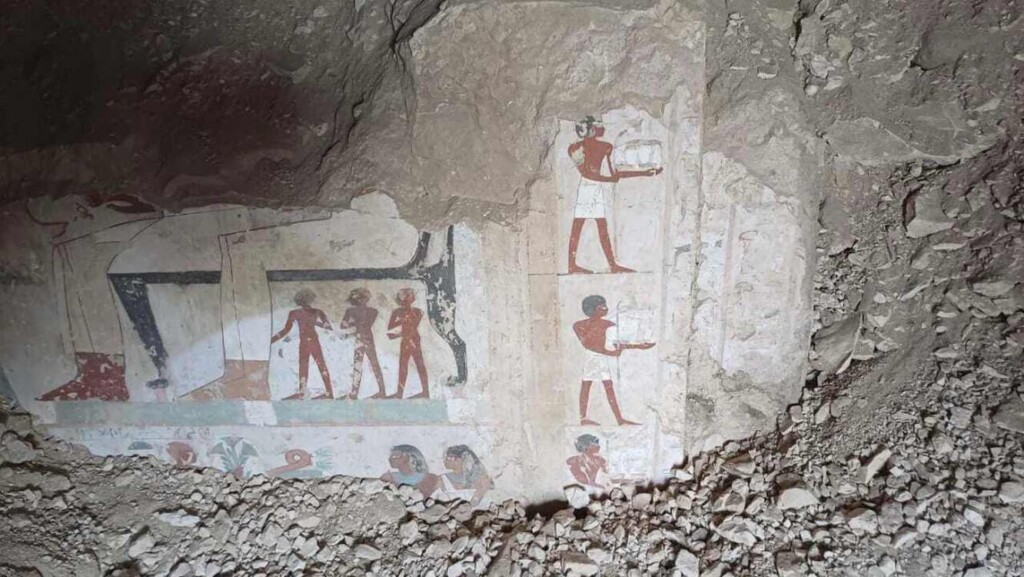 The walls of a New Kingdom tomb found in Luxor – credit, Ministry of Tourism and Antiquities, released
The walls of a New Kingdom tomb found in Luxor – credit, Ministry of Tourism and Antiquities, releasedThe tombs of three ancient Egyptian officials have been discovered in Luxor, the Egyptian government has stated, marking yet another discovery from the famous city on the Nile.
In February, the tomb of pharaoh Thutmose II was found not far from the Dra’Abu El Naga, an important non-royal necropolis where this new trio of discoveries was made.
Dating back to the era called the New Kingdom, starting from 1539 BCE and ending in 1077 BCE, the tombs belonged to several officials at the Temple of Amun, a deity worshiped as king of the gods at the time.
Inscriptions inside the tombs allowed the excavation team to identify the names and titles of their owners, said Mohamed Ismail Khaled, secretary-general of Egypt’s Supreme Council of Antiquities, in the statement.
The first was called Amun-em-Ipet, the second Baki, and the third Es. The three men held various positions, and their tombs were constructed in similar ways.
Es, the most important, was recorded as being a mayor of the northern oases, a scribe, and the supervisor of the Temple of Amun. Baki was a granary official charged with overseeing the collection and storing of the vast amount of grains and cereals produced from farming along the Nile.
Amun-em-Ipet by contrast is less known. He worked either in the temple or the estate of Amun.
According to Egypt’s Ministry of Tourism and Antiquities, the excavations that uncovered the tombs were conducted by an entirely-Egyptian team, and marked a “significant” discovery for the country’s archaeological record.
Amun-em-Ipet’s tomb consists of a courtyard, entrance portal, and long hall ending in a niche, but is in poor condition.
LATEST FROM EGYPT:
Baki’s tomb was larger, and consists of a long, corridor-like courtyard followed by another courtyard leading to its main entrance. Entering the interior, a rectangular hall leads to another of the same, wherein lies the official’s burial niche.
The tomb belonging to Es also has a small courtyard containing a well, followed by a main entrance, and a transverse hall leading to an incomplete hall longer than the first, CNN reports.
One wonders if we will ever run out of these discoveries, which if found in many other countries of the world would be labeled as monumental, but, since being from the time of ancient Egypt, are relegated to acknowledgment via a simple statement on the Antiquities Ministry Instagram page.
SHARE This Latest From The Land Of The Nile With Your Friends…
Source link

